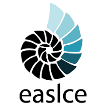<b>Prometheus Delivered</b> // Prometeo liberado
DOI:
https://doi.org/10.37536/ECOZONA.2018.9.2.2396Abstract
Stone is turned into meat. This spectacular project entitled “Prometheus delivered” is an installation that Thomas Feuerstein stages as a fascinating laboratory of bubbling bioreactors, mysterious fluids, pumps and endless tubes which wind around a classicist marble sculpture of Prometheus and meander through the entire exhibition. It is the first major solo exhibition of the Austrian artist in Munich. At the center of the installation is a sculpture, a replica of the Prometheus statue by Nicolas-Sébastien Adam (1762), and features its gradual decomposition. The miraculous protagonists of this process of metabolism are stone-eating (chemolithoautotrophic) bacteria. They convert the marble into plaster and, in a further complex transformation, they themselves become the food of human liver cells. The cycle of destruction and re-creation inherent in the Prometheus myth is replicated in a biochemical process. Zeus chained Prometheus to a rock in the Caucasus as punishment for bringing fire to people and thus technology. An eagle rips his liver out of his body – but every night it grows back again. The final result of Thomas Feuerstein's “Prometheus delivered” is – by analogy to the myth – a bioreactor in which human hepatocytes grow and finally form a new three- dimensional liver sculpture. As in antiquity, the liver becomes the organ and a medium that looks into the future because Feuerstein’s installation gives us a glimpse into a time to come in which human beings no longer subsist on animals and plants, but possibly on their own body cells. The exhibition presents this narrative using drawings and objects, sets them to music that also incorporates a radio play, and performs them by means of biochemical processes. In addition to focusing on sound scientific facts, the show is also a science fiction story and a splatter movie on the brink of horror.
Resumen
La Piedra se convierte en carne. Este espectacular proyecto titulado “Prometeo liberado” es una obra que Thomas Feuerstein plantea como un laboratorio fascinante de biorreactores burbujeantes, fluidos misteriosos, surtidores y tubos sin fin que envuelven una escultura clásica de mármol de Prometeo y que serpentean por toda la exposición. Es la primera gran exposición en solitario del artista austríaco en Múnich. En el centro de la obra hay una escultura, una réplica de la estatua de Prometeo de Nicolas-Sébastien Adam (1762), y presenta su descomposición gradual. Los protagonistas milagrosos de este proceso son bacterias comedoras de piedra (quimiolitoautotróficas). Convierten el mármol en escayola y, en una transformación más compleja, ellas mismas se convierten en el alimento de células del hígado humano. El ciclo de destrucción y re-creación inherente al mito de Prometeo se replica en un proceso bioquímico. Zeus encadenó a Prometeo a una roca en el Cáucaso como castigo por llevar el fuego al hombre, y así, la tecnología. Un águila le arranca el hígado del cuerpo—pero cada noche vuelve a crecer. El resultado final del “Prometeo Liberado” de Thomas Feuerstein es—análogo al mito—un biorreactor en el que los hepatocitos humanos crecen y finalmente forman una nueva escultura tridimensional del hígado. Como en la antigüedad, el hígado se convierte en el órgano y en un medio que mira hacia el futuro porque la obra de Feuerstein nos permite ojear un tiempo venidero en el que los seres humanos ya no viven de animales y plantas, sino posiblemente de sus propias células. La exposición presenta esta narrativa usando dibujos y objetos, usa música que también incorpora una obra radiofónica, y los pone en funcionamiento mediante procesos bioquímicos. Además de centrarse en hechos científicos sobre el sonido, el espectáculo también es una historia de ciencia ficción y una película con salpicaduras al borde del terror.
Downloads
##submission.downloads##
##submission.additionalFiles##
Pubblicato
Fascicolo
Sezione
Licenza
Authors who publish with this journal agree to the following terms:
a) Authors retain copyright and grant the journal right of first publication with the work simultaneously licensed under a Creative Commons Attribution License that allows others to share the work with an acknowledgement of the work's authorship and initial publication in this journal (CC BY-NC for articles and CC BY-NC-ND for creative work, unless author requests otherwise.
b) Authors are able to enter into separate, additional contractual arrangements for the non-exclusive distribution of the journal's published version of the work (e.g., post it to an institutional repository or publish it in a book), with an acknowledgement of its initial publication in this journal.
c) Authors are permitted and encouraged to post their work online (e.g., in institutional repositories or on their website) prior to and during the submission process, as it can lead to productive exchanges, as well as earlier and greater citation of published work (See The Effect of Open Access).










